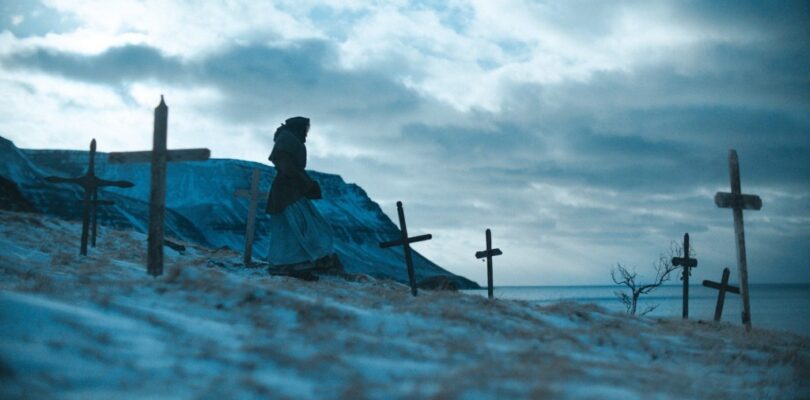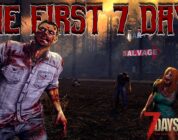“It’s all true. Well, true myth, anyway,” says Thordur Palsson about The Damned, his Nordic horror film set in a 19th century Icelandic village besieged by zombies.
Odessa Young (HBO’s The Staircase) stars as Eva, a widow running an isolated fishing post in Iceland’s West Fjords in the 19th century. When a ship sinks just off the coast, Eva and her crew, snowed in and starving, have to choose to either rescue the shipwrecked or leave them to die.
Protagonist Pictures, which is handling worldwide sales for the film, co-repping the U.S. with CAA, will give buyers a sneak peek of The Damned at the European Film Market in Berlin this week.
“These are the kinds of stories I’d always hear growing up in Iceland,” says Palsson, “about ships stuck on the rocks, maybe because the Icelanders on shore moved the lighthouse to trick people to make them hit the rocks. And then they just took whatever they could find to get through the winter. If there were some survivors, the townsfolk made sure there were no survivors.”
But the wrongly killed, so the myths say, will return to enact their revenge. As mysterious tragedies begin to befall the village, there is talk the shipwrecked have become draugur.
“You’d translate draugur as ‘ghost,’ but it means something different in Icelandic. If you read the old stories, they are actually much closer to a zombie,” says Palsson. “It’s when a person is so greatly wronged that their body comes back to get revenge. This horrible entity, this rotting body, tries to find you when it gets dark. If you hear them knocking at night, don’t open the door. These are the kinds of stories we tell our children in Iceland.”
Occasional jump scare aside, The Damned is no The Walking Dead. Palsson is more interested in psychological horror than splatter gore. The film is shot from Eva’s perspective as she begins to question the reality around her.
“Rosemary’s Baby, of course, is such a classic [of psychological horror] in how it talks about so many social issues, about women’s bodies, gaslighting, all these sorts of things, but does so by keeping a single perspective, forcing the audience to ask, ‘Is this happening or not?’” says Palsson. “So The Damned is also shown entirely through Eva’s eyes. I never cut to another character. I want to draw the audience into her psychological perspective, where you ask: ‘Is this the guilt eating her up and making her see things, or is there really an entity that has come back for revenge?’”
Palsson, who is best known for his Netflix series The Valhalla Murders, about the hunt for Iceland’s first serial killer, began working on The Damned while living in the West Fjords himself. “I got snowed in, just like those fishermen in the stories, cut off from the rest of the world.” He decided to shoot The Damned entirely on location, contributing to the movie’s sense of realism.
The setting — an isolated European outpost defending itself from small boats carrying foreigners — has strong political overtones. Eva’s debate with the villagers mirrors arguments that have been heard in parliaments across Europe over whether to take in refugees or let them drown in the Mediterranean or the North Sea.
“We were developing the script back in 2015 when the refugee crisis appeared to be at its height, and I remember thinking, ‘Oh, when the film comes out, this isn’t going to be relevant anymore,’” says Palsson. “Looking outside these days, it’s sadly still very relevant. But what I think is interesting is seeing this issue through the genre lens [of the horror movie], which hopefully doesn’t bang you over the head with the issue, but draws you in to think about the moral questions behind it. What would you do? If a ship sinks off your shores, would you row out and save these foreigners or let them die?”





